All You Need to Know About Heat Transfer Printers: 2024 Guide
Are you ready to turn your creative designs into life? It’s no more a dream now! You’ve found the right printer expert for tips and advice on printing machines.
Heat transfer printers have become an essential tool to customize products. From t-shirts and mugs to phone cases and fabric, these versatile machines are efficient solutions to printing high-quality.
With the ruling of these printers in the market it’s super easy to do fabric decoration, anytime.
This guide will walk you through everything you need about heat transfer printers, from how they work to the various types available, and tips for getting the best results.
Find out how you can make a well-informed choice to turn your ideas into vibrant designs.
Table of Contents
What is a Heat Transfer Printer?
Imagine your designs are rocking in the printing world! It’s just because of the heat transfer printer. This specialized printer works by heating a transfer paper and transferring an image or design onto a substrate, which can be fabric, ceramic, or metals.
This type of printer is mostly used to print t-shirts, caps, bags, and any promotional items such as key holders, mouse pads, and ID holders. Heat transfer printing technology is popular nowadays because it is flexible and effective for quality printing.
The results? Don’t worry about it, you’ll get cool and colorful designs without any hassle. It’s like customizing a masterpiece with a sprinkle of heat and a dash of artwork!
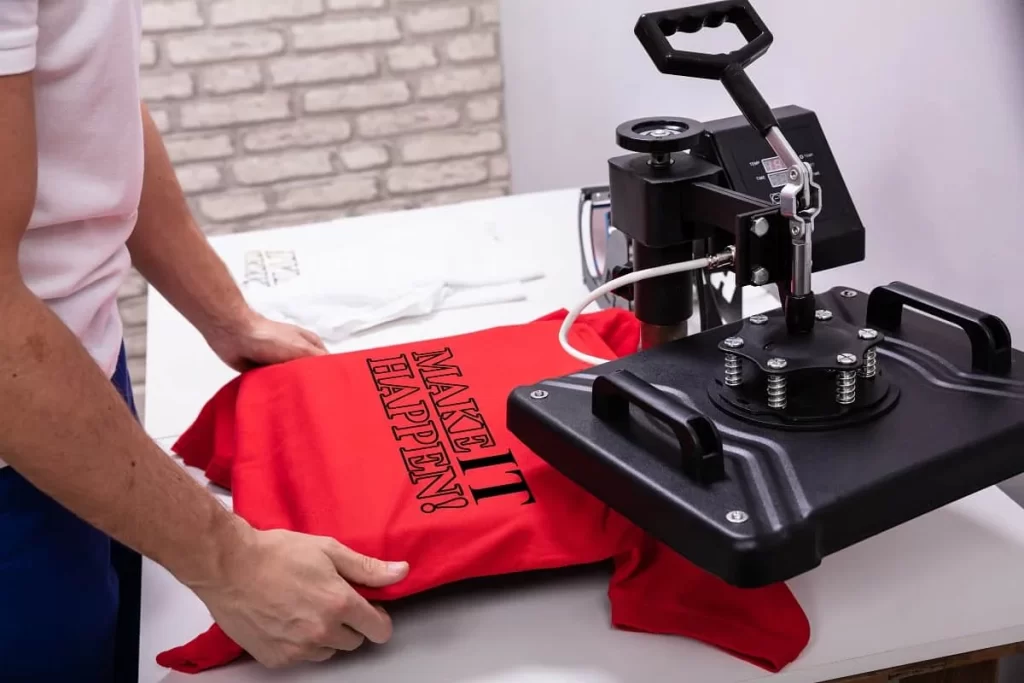
How Does a Heat Transfer Printing Machine Work?
Heat transfer printers work by printing your design onto a transfer paper that is coated with a special material. Here’s a breakdown of the process:
Step #1: Design Creation
The process begins with creating a design using graphic design software. This design can be anything from text and logos to complex images.
Step #2: Printing on Transfer Paper
Once the design is ready, it is printed onto heat transfer paper using a heat transfer printer. The compatible ink used in this process is usually dye-sublimation ink or pigment-based ink, depending on the type of transfer paper and substrate.
Step #3: Heat Press Application
After printing, the transfer paper is placed on the substrate (like a t-shirt) and pressed with a heat press machine. The heat and pressure from the machine activate the ink to transfer from the paper to the fabric.
Step #4: Heat Peeling and Finishing
After pressing, the transfer paper is peeled off, leaving the design on the substrate. The result is a vibrant, long-lasting print.
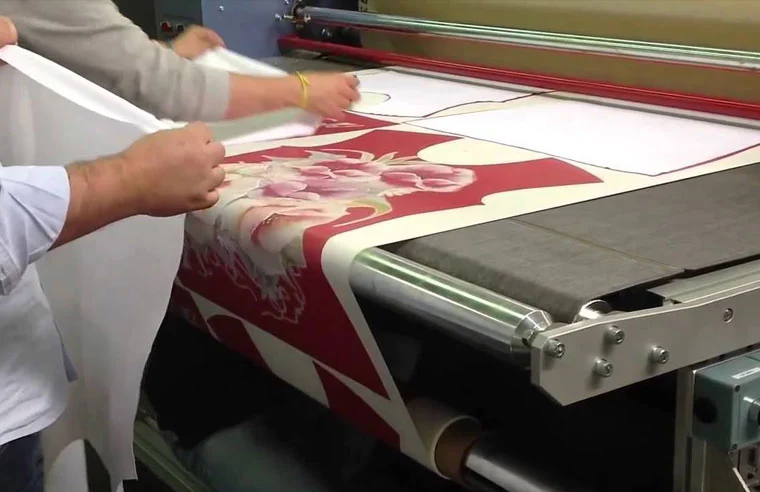
Types of Heat Transfer Printers
There are different types of heat transfer printers in the market, each suitable for different materials and printing needs:
Sublimation Heat Transfer Printer
Sublimation printers use special sublimation inks that turn into gas when heated. This gas penetrates within the substrate to make a bond with fibers.
These printers are best suited for printing on polyester fabrics, mugs, and other items that can withstand high temperatures.
Vinyl Heat Transfer
In vinyl transfer, design printing is not needed. A vinyl transfer printer uses heat transfer vinyl to cut designs from the material which is then applied onto the fabric. For printing single-color designs, numbers, logos, and letters, a vinyl heat transfer printer is a go-to choice.
These printers are ideal for printing designs on t-shirts, jerseys, other garments, and products such as laptops, and cars.
Direct-to-garment (DTG) Printers
DTG printers are similar to traditional inkjet printers but use special heat transfer inks. These printers use inkjet technology to print onto fabrics.
They are versatile and can be used for a variety of substrates, including cotton and synthetic fabrics. They offer a high level of detail and quality prints to fulfill customer satisfaction.
Heat Press Machines
Heat press machines are the most popular type of heat transfer printing machine. They have a hot platen that can be operated manually or automatically.
Heat press machines are versatile and flexible to print for a variety of purposes, including garments, accessories, and promotional product designing.
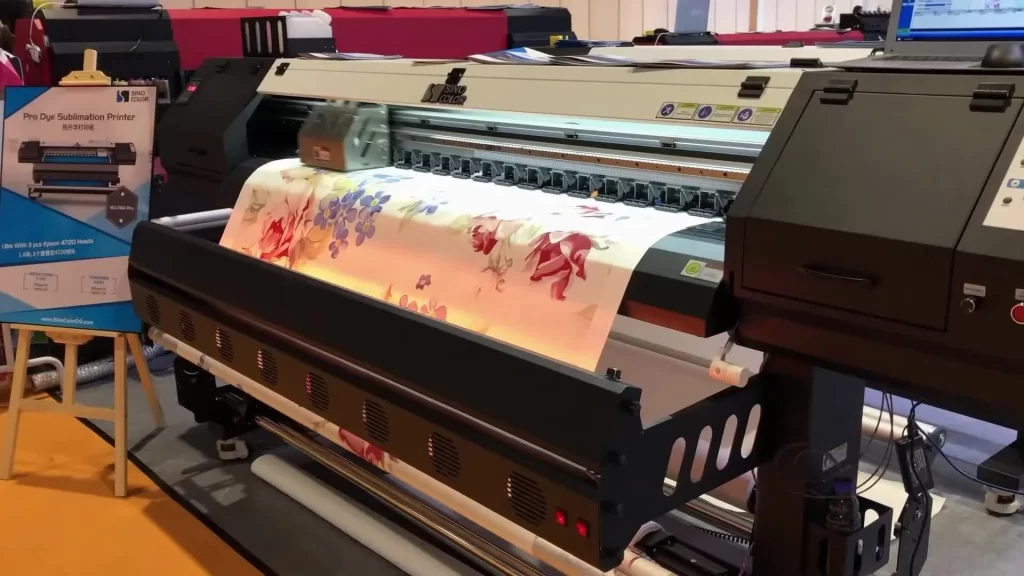
Advantages of Using Heat Transfer Printers
Now you better understand how heat transfer printers work and their types; it’s time to crack the code of why it’s a top-tier choice for printing enthusiasts. Let’s look at it!
Versatility
Everyone wants to print on a wide range of fabrics with one printer on hand. With a heat transfer printer, it’s become flexible to print on anything you want. It’s printing on ceramic, fabric, metal, or plastic, you can go a long way in this industry.
Whether you want to personalize custom apparel, promotional items, or unique crafting, this printer offers the flexibility to bring creative ideas to diverse surfaces.
Ease of Use
The process is straightforward and doesn’t require a steep learning curve, making it accessible for beginners. If you have no technical experience, you will find the use as simple as pie.
The integrated electronic unit and touchscreen interface make adjusting printing parameters or editing the design in a digital file easy. You can also connect a USB flash driver to the printer to print the design.
Customization
If you own a printing business, the desire to offer more products and services is never-ending. The heat transfer printing allows you to launch new personalized items tailored to different preferences.
With the ability to print names, logos, and unique designs on various items, these printers fulfill customer satisfaction and create a sense of individuality.
High-Quality Output
Another major advantage of heat transfer printers is their ability to produce impressive quality prints that are very clear, vibrant, and detailed. It has a new technology to enhance shade, lines, and gradients.
The heat and pressure applied during the transfer process help the designs stick to the substrate and make the prints durable. Due to the quality results produced with heat transfer printing machines, this printing equipment is ideal for professional and business use.
Cost-Effectiveness
Especially for small batches, heat transfer printing is more cost-effective compared to screen printing. Compared to traditional printers, heat transfer printers require minimal setup and maintenance.
The ability to print on-demand lets you do better inventory management, reducing the chances of overstocking. Plus, the printer does not compromise on quality. That makes it suitable for businesses of all sizes and tight on budget.
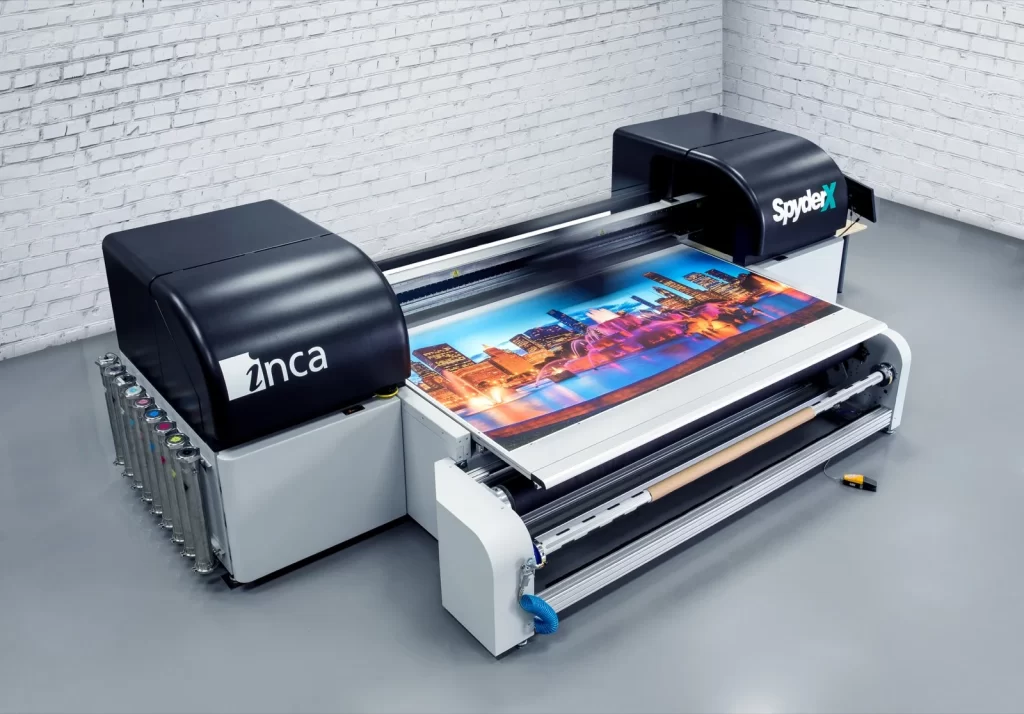
Application of Heat Transfer Printer
Heat transfer printing machines are used across various industries, including:
Custom Apparel Printing
Heat transfer printers are widely used for custom apparel printing, like t-shirts, hoodies, hats, jerseys, and other garments.
The ability to print high-quality logos and images onto the fabric makes these printers must-have tools for garment printers and fashion enthusiasts.
Sublimation Printing
Sublimation a popular printing technique used in heat transfer printers relies on heat presses to transfer designs from specialized sublimation paper to substrate.
The substrate may be anything from polyester-based fabrics and phone cases to mugs, and mousepads. The results would be high-quality and full-color prints.
Home Decor and Gifts
These heat press printing machines play a key role in printing home decor accessories and gifts. These accessories include pillowcases, cushions, and tablecloths to add a personal touch that makes them truly yours.
The easy application of intricate designs onto the substrate enhances the aesthetic appeal of these objects beyond what you think they may be.
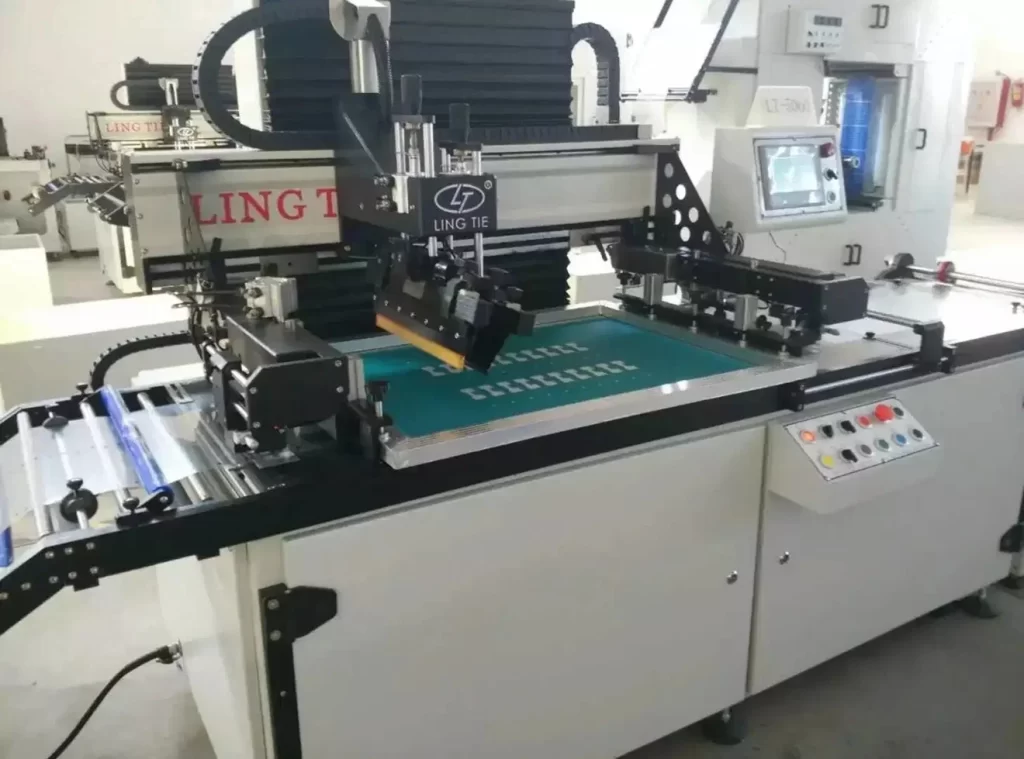
Factors to Consider When Buying a Heat Transfer Printer
When selecting a heat transfer printer, consider the following factors:
- Print Quality: The printer’s resolution and ink quality will define the image’s sharpness and detail. Ensure the printer you’re buying has a high RIP (Raster Image Processor)
- Speed: To produce a high volume of transfers, a fast printer is essential. Look for a high-speed printer to cater to bulk printing orders.
- Cost: Be mindful of the initial cost of the printer plus the cost each time you buy ink, transfer paper, and even the printer maintenance cost.
- Substrate Compatibility: Make sure that the printer and transfer paper of your choice are suitable for the substrates you want to work with such as fabric, paper, or metal.
- Features: Some features you may look at include: auto feeder, color management, and the compatibility of the software it comes with.
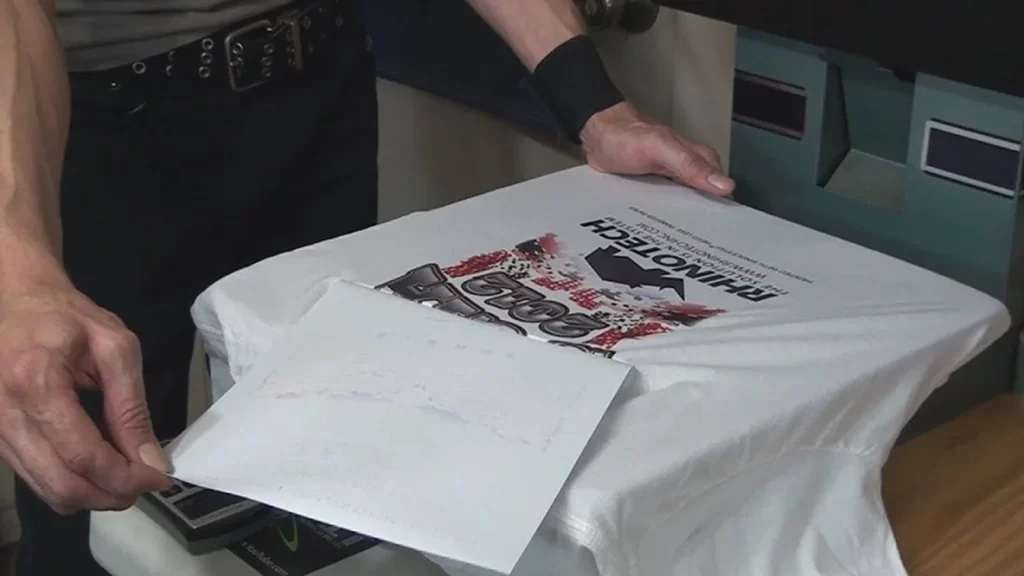
Tips to Get the Best Results Using a Heat Transfer Printer
- Use High-Quality Transfer Paper: The quality of the transfer paper affects the final output. Invest in paper that is compatible with your printer and substrate.
- Calibrate Your Printer: Ensure your printer is calibrated for accurate color reproduction. This includes setting the correct resolution and color profiles.
- Test on a Sample: Before going for a large batch, print a sample to check how the design looks on the material.
- Maintain Proper Heat and Pressure: Follow the manufacturer’s guidelines to set the correct heat and pressure settings on your heat press machine. Incorrect settings cause poor transfers or damage to the substrate or the printer too.
- Store Materials Properly: Keep your transfer paper and vinyl in a cool, dry place to prevent any degradation that affects the print quality.
Conclusion
That’s all! You have got everything about heat transfer printers. Due to their versatility, ease of use, easy customizations, high-quality prints, and cost-effectiveness, these printers are becoming a hot market trend for printing designs on different surfaces.
Whether you’re a small business owner, a hobbyist, or someone who wants to start a DTF printing business, as long as you have this guide, you’re all set to make a wise decision.
So, look nowhere and be ready to amaze the world with aesthetic prints that stand out among all the rest.
